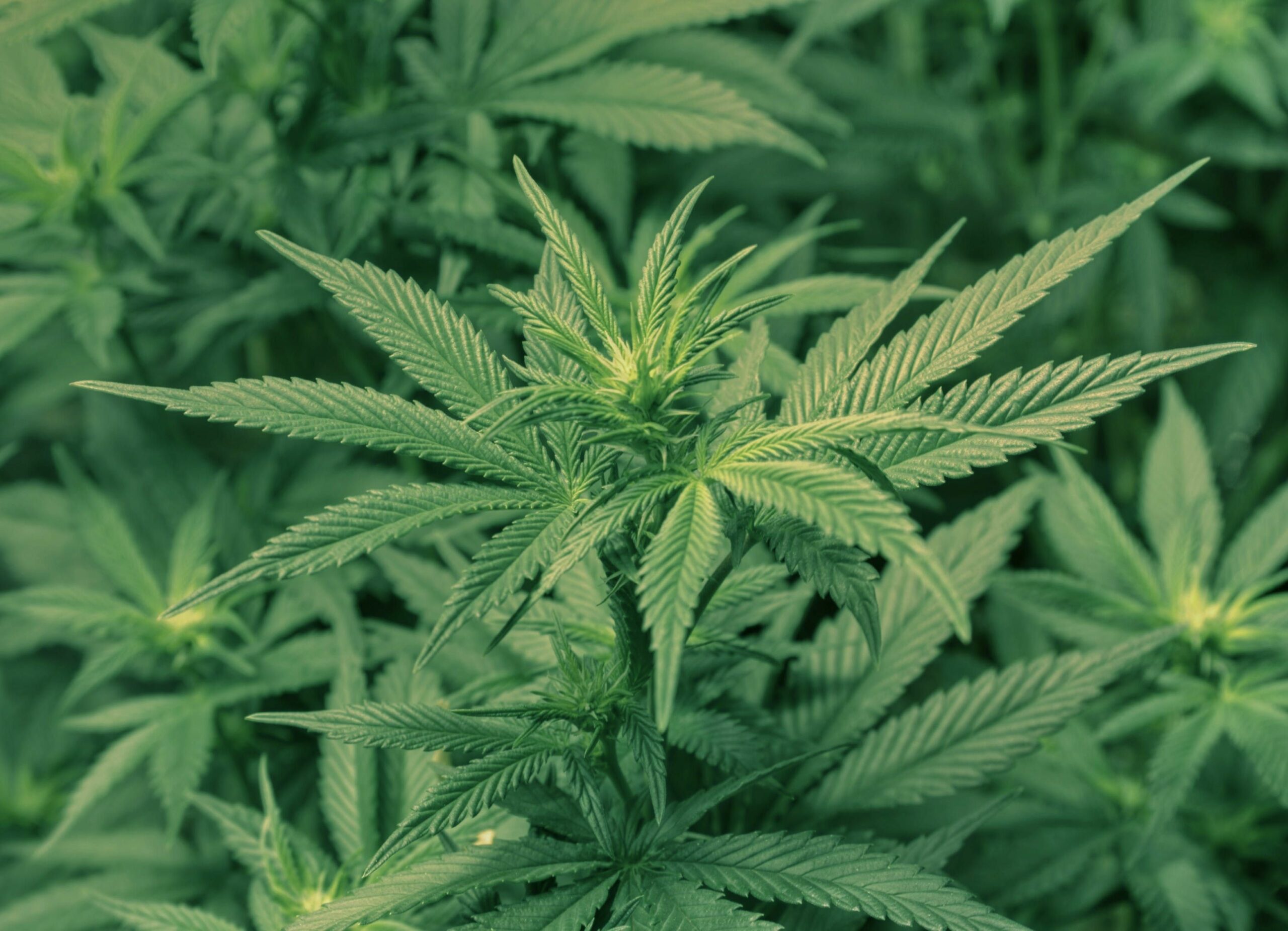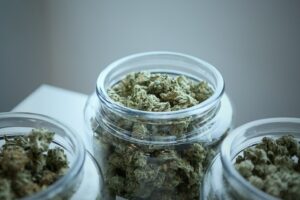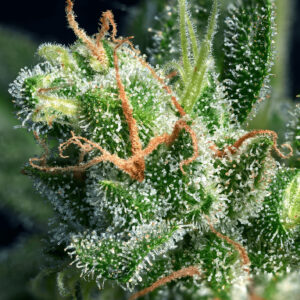For much of human history, cannabis was used for food, fiber, and as a drug for medical and spiritual purposes. It was only in the late 1800s that countries around the world began to ban its use and cultivation. By the mid-1900s, cannabis prohibition was the norm in most parts of the world, and only recently have public attitudes begun to shift.
As cannabis’s stigma begins to dissipate, we look back at the plant’s history and how we got to now.
FOLLOW US ON FACEBOOK & INSTAGRAM
8000 BCE: Cannabis Is Domesticated
Archeological evidence suggests that cannabis was first domesticated in Central Asia. From there, humans brought the plant with them in their migrations across the globe.
In each area that humans settled, they bred the plant for their specific needs such as food, fiber and in some cases even psychoactivity. Over thousands of years, humans selectively bred cannabis plants, and each area developed plants that were specifically adapted to life in that region. Today, these indigenous plants are known as landrace strains.
7000 BCE–476 CE: Cannabis Was an Important Crop in the Ancient World
Archeologists have found evidence of the cannabis plant in southern and eastern Asia, Europe, Egypt and the Arabian Peninsula. The cannabis plant played an important economic, cultural and spiritual role in the civilizations it was cultivated in. The plant was also used medicinally by many ancient civilizations, including by the Chinese, Egyptians and Romans.
500s–1400s: Cannabis Continues to Spread Across the Globe
After the fall of the Western Roman Empire, cannabis continued to play an important role in ancient societies. Archeologists uncovered the grave of French queen Arnegunde, who was buried with a hemp cloth in 570. And cannabis seeds were uncovered in a Viking burial that dates back to 800.
References to hashish abound in the Arab world and date as far back as 1000. Some of the earliest references to cannabis’s intoxicating properties were from the Arab world during this era. The famous One Thousand and One Nights contains details of the cannabis’s aphrodisiac properties. The plant was even implicated as a tool that was used by assassins in Marco Polo’s account of his journeys in the late 1200s.
RELATED: CANNABIS & SEX: A BRIEF WORLD HISTORY
It’s speculated that the Arabs spread cannabis to Africa, as the plant isn’t native to the continent. The earliest evidence of the plant in Africa outside of Egypt is from Ethiopia in the 1300s, where archeologists discovered ceramic pipes that contained traces of cannabis.
1500s–1700s: Hemp Helps Power the Age of Exploration
Ropes and sails made from hemp were crucial to the Age of Discovery. Hemp was so important that by 1545 the Spanish crown required much of its colonized farmers to meet hemp quotas.
Meanwhile in Britain, cannabis cultivation hit its peak to meet the English military’s seafaring needs. During the Tudor era, farmers in the English countryside were required to plant a certain percentage of their land with cannabis, and the same was required of farmers in Scandinavia.
Mid 1700s: Marijuana Gets a Species Name
Naturalist Carl Linnaeus described a single species of hemp, Cannabis sativa in Species Plantarum, which was published in 1753. In 1785, another naturalist, Jean-Baptiste de Lamark, proposes that there are two species of the plant: C. sativa as previously described and Cannabis indica, a wild species that grows in India and the surrounding regions. The debate over whether marijuana constitutes more than one species continues to this day.
1842: Cannabis Receives Renewed Interest in the West
Irish physician William Brooke O’Shaughnessy often traveled to India. It was here that he first studied and observed the use of Cannabis indica. In 1842, William returned from his travels and brought cannabis to Britain, provoking renewed interest in the plant’s medicinal properties in the West.
During the 1800s into the early 1900s, cannabis was a popular sight in pharmacies across the West, including in the United States, where it was used as a remedy for everything from pain to insomnia.
1844–1849: The Club of Hashish-Eaters Enjoys Cannabis’s Creative Properties
In the beginning of the 1800s, cannabis in the concentrated form of hashish and drugs like opium were recreationally popular in Europe’s scientific and literary circles. The Club des Hashischins, or Club of Hashish-Eaters, was one such group that participated in this type of recreation. The club was dedicated to exploring drug-induced experiences, and hashish was often their substance of choice. Some of the group’s most well-known members included Alexander Dumas, Victor Hugo and Charles Baudelaire.
1890: Cannabis Bans Begin in Some Arab Countries
Some countries in the Islamic world began to ban cannabis in the late 1800s. Egypt banned the plant’s importation in 1879; Morocco heavily regulated cannabis cultivation and trade; and Greece banned hashish in 1890. These laws had varying degrees of success.
1893–1894: Indian Hemp Drugs Commission Finds That Cannabis Is Harmless
The Indian Hemp Drugs Commission was formed to investigate what was known at the time as “the ganja menace.” After a year of research and interviews with Indians from all walks of life, the commission found that banning cannabis would be “totally unjustifiable.” Doing so, they stated, would make England very unpopular due to the plant’s integral part in social and religious life in the country. Moreover, they felt that a ban would cause people to turn to more harmful drugs—a sentiment that bears modern applications.
1913: Cannabis Prohibition in the U.S. Begins
California, Maine, Wyoming and Indiana banned marijuana. Other states followed suit; by 1933, 29 states had criminalized the plant.
1925: International Opium Convention in Geneva Attempts to Regulate Cannabis
The goal of the International Opium Convention in 1912 was to regulate the opium industry. However, by 1925, cannabis was also included on the agenda. An agreement was made between 13 nations, including the United States, to ban exports of “Indian hemp” in countries that had prohibited its use. Although restricted, there was still much leeway for countries to grow cannabis, trade internally and use the plant for recreational reasons. The law was established in 1925, but didn’t go into effect until 1938.
1936: Reefer Madness Film Is Released in the U.S.
The 1930s marked the start of the reefer-madness era in the United States. The term comes from a movie of the same name, an anti-cannabis piece of propaganda that was released in 1936.
1937: U.S. Marijuana Tax Act Places Cannabis Under Government Control
Passed by the United States Congress, the act placed production of all cannabis under government control. All hemp farmers were required to register and obtain a license from the federal government. Other restrictions were passed regarding the production, sale and possession of cannabis—all in an attempt to curb the plant’s use. Several other nations also established prohibition laws regarding cannabis during this time.
1960s–70s: The Hippie Trail Spreads Cannabis Seeds & Culture
Lured by promises of adventure and exotic lands where the hashish was strong, cheap and plentiful, youth of the Western counterculture movement set off on the Hippie Trail—an overland route that began in Europe and wound its way through Turkey, Iran, Afghanistan, Pakistan and India before ending in Nepal. It’s said that along the way, these travelers picked up cannabis seeds and brought them back to the United States, where they would become some of the parents of today’s modern-day cannabis strains.
1964: Raphael Mechoulam Isolates Delta-9-Tetrahydrocannabinol (THC)
Israeli chemist Raphael Mechoulam was the first to isolate THC from cannabis and fully elucidate the molecule’s three-dimensional structure. He did the same with cannabidiol (CBD), one year prior. Because of his work, he’s often thought of as the father of modern-day cannabis science.
1970: The Controlled Substances Act Classifies Cannabis as a Schedule I Drug
The Controlled Substances Act listed marijuana as a Schedule I drug: a substance with high abuse potential, no medical use and severe safety concerns. This categorization of cannabis has had far-reaching effects, hampering scientific research and people’s access to the plant—effects that are still felt today.
1970: National Organization for the Reform of Marijuana Laws (NORML) Is Established
Initially funded by a $5,000 grant from the Playboy Foundation, NORML has been fighting for the rights of cannabis consumers since the 1970s. The organization continues to play an important role in the marijuana decriminalization movement in the United States and also operates internationally.
1973: Oregon Decriminalizes Cannabis
Oregon became the first state to decriminalize cannabis by reducing the penalty for possession of up to one ounce to a $100 fine. Alaska, Maine, Colorado, California and Ohio followed suit two years later.
1976: The Netherlands Decriminalizes Cannabis
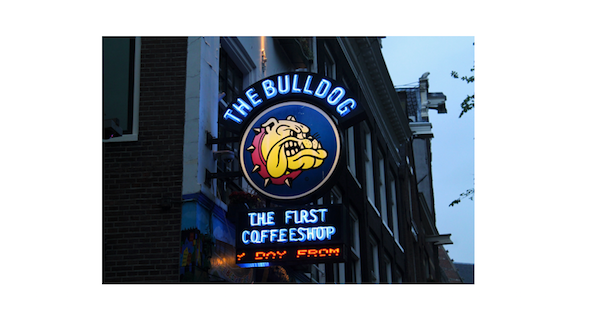
The Bulldog was the first coffeeshop in Amsterdam
The Netherlands first criminalized cannabis in 1953, but decided to decriminalize it in 1976, removing penalties for possession of small amounts of the plant. Since then, cannabis use and sales have been allowed in designated coffeeshops, fostering Amsterdam’s vibrant, modern cannabis scene.
1985: The Emperor Wears No Clothes Is Published
Marijuana legalization activist Jack Herer publishes The Emperor Wears No Clothes, a book that intended to educate the public on the cannabis plant’s history and myriad uses. Now in its 12th edition, the book is widely available online—just like Herer would have wanted.
1988: Scientists Discover the Endocannabinoid System
Scientists Allyn Howlett and William Devane located the CB1 receptor in the rat brain, hinting at the existence of the endocannabinoid system. In the early 1990s, other key components of this system were identified.
1992: San Francisco Cannabis Buyers Club Is Born
The San Francisco Cannabis Buyers Club, founded by the late, great cannabis activists Dennis Peron and Mary Jane Rathburn, was the nation’s first public marijuana dispensary. The idea for the club came to Dennis in jail after he was arrested for possessing four ounces of marijuana. The cannabis actually belonged to his partner Jonathan West, who was using it to ease his AIDS symptoms.
Dennis and Mary Jane boldly opened and operated the dispensary in defiance of state and federal law. They would both go on to help with the passing of Proposition 215.
1996: California Becomes the First State to Legalize Medical Marijuana
California became the first state to legalize medical marijuana with the passage of Proposition 215, also known as the Compassionate Use Act of 1996. Oregon, Alaska and Washington did the same two years later.
2001: Canada Legalizes Medical Marijuana
Canada became the first country to legalize medical marijuana for terminally ill patients and those with chronic illnesses. Other countries like Australia, Israel and Chile have followed suit.
1998: Breeding of High CBD Cannabis Strains Begins
Geoffrey Guy of GW Pharmaceuticals teams up with Dutch Seed Company HortaFarm to begin the process of breeding cannabis strains that are high in cannabidiol (CBD). It would be roughly 10 years before these strains would make it to the United States.
2008: First Cannabis Testing Lab in the U.S. Opens
Steep Hill Halent Labs became the first consumer cannabis testing lab in the United States when it opened in Berkeley, CA. The lab was opened in conjunction with Steve DeAngelo of Harborside Health Center after the entrepreneur had difficulty getting non-cannabis labs to test his products. Steep Hill eventually went on to test some of the first high CBD strains for potency.
2012: Adult-Use Cannabis Becomes a Reality in the U.S.
Washington and Colorado became the first two states in the United States to legalize recreational marijuana through voter initiatives. Alaska and Oregon did the same in 2014.
2013: CNN Airs “Weed”
Sanjay Gupta’s three-part documentary series “Weed” popularized medical marijuana for many Americans. The first documentary featured Charlotte Figi, a six-year-old with a severe form of epilepsy who found relief after taking CBD. After the airing of the documentary, interest in CBD products skyrocketed—a trend that still continues today.
2013: Uruguay Becomes the First Country to Legalize Cannabis
Uruguay was the first country in the modern era to legalize recreational cannabis. However, retail sales didn’t begin until 2017. Canada is currently on track to legalize adult-use cannabis in 2018.
2016: A Record Number of Americans Supports Cannabis
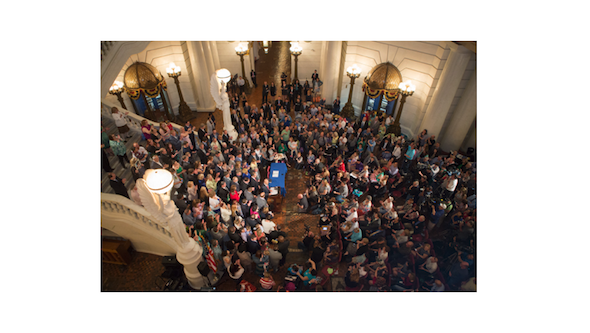
Pennsylvania’s Governor Tom Wolf signs legislation legalizing medical marijuana
In October 2016, 60% of Americans believed that “the use of marijuana should be legal,” according to a Gallup poll. In 2017, that number jumped to 64%—the highest percentage recorded since the group began polling the question in 1969.
2017: World Health Organizations Supports CBD Use
A World Health Organization (WHO) report found that CBD isn’t associated with abuse potential and on the contrary, has several medical applications. The WHO also noted that research confirms some of the molecule’s positive benefits.
2018: Recreational Cannabis Sales Begin in California
The world’s sixth-largest economy began selling recreational cannabis in January 2018. All eyes are on California, currently the world’s largest cannabis market, to see how things unfold.
Main photo credit: Mark
Bulldog coffeeshop photo credit: Michael Costa
Tom Wolf photo credit: Governor Tom Wolf
If you’re new to cannabis and want to learn more, take a look at our Cannabis 101 post. HelloMD can help you get your medical marijuana recommendation; it’s easy, private and 100% online.



